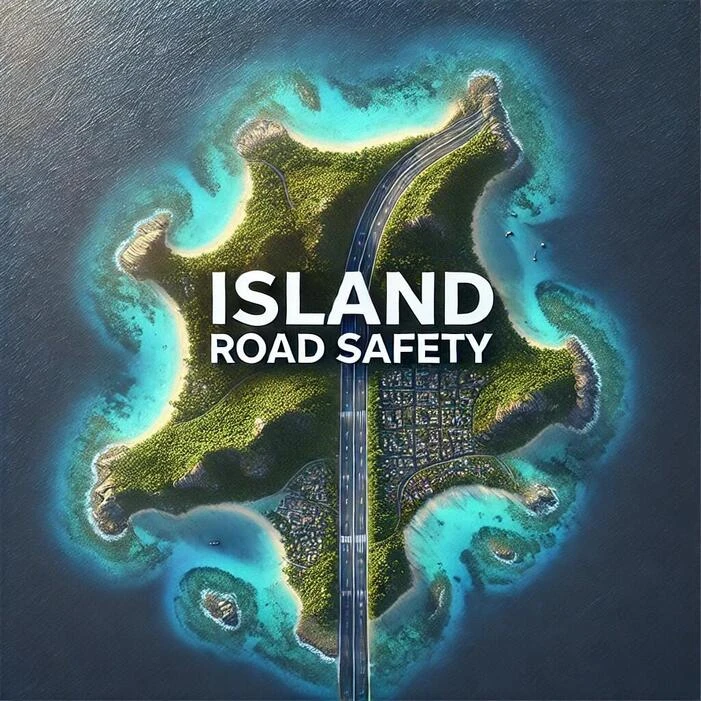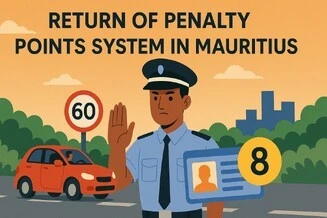Food for thought: Mauritius vs. La Réunion - A Comparison of Road Fatalities in 2024

Road safety remains a significant concern for both Mauritius and its neighboring island, La Réunion. Despite similarities in geographic size and infrastructure, road fatalities in the two regions present a stark contrast. Analyzing 2024 statistics sheds light on the scale of the issue and highlights key areas where improvements can be made.
Road Fatalities: A Statistical Comparison
In 2024, Mauritius recorded 111 road fatalities, while La Réunion reported 39 deaths due to road accidents. Considering the population difference - Mauritius has approximately 1.27 million people compared to 896,000 in La Réunion - the discrepancy in road fatality rates becomes more apparent.
The road traffic mortality rate (deaths per 100,000 people) for each island is as follows:
Mauritius: 8.7 deaths per 100,000 inhabitants
La Réunion: 4.4 deaths per 100,000 inhabitants
This data reveals that Mauritius had nearly double the per capita road fatalities compared to La Réunion in 2024.
Who Are the Most Affected Road Users?
Both islands reported that motorcyclists and pedestrians were the most vulnerable road users.
In Mauritius, motorcyclists accounted for 52 fatalities, while pedestrians represented 17 deaths.
In La Réunion, motorcyclists and pedestrians each made up 31% of the total fatalities, while automobilists accounted for 38%.
This trend highlights the risks associated with two-wheeled transport and pedestrian safety, underscoring the need for targeted interventions. Notably, motorcycles are more widely used in Mauritius, where an estimated 35% of motorists rely on them for transportation. In contrast, the percentage in La Réunion is estimated to be lower, likely between 15-20%. This greater reliance on motorcycles in Mauritius could be a contributing factor to the higher number of fatalities among riders.
Road Safety Challenges and Solutions
The higher road fatality rate in Mauritius suggests that improvements in road safety measures are necessary. Some key areas to focus on include:
Motorcyclist Safety: While helmet laws are enforced, the quality of helmets is often overlooked. There are no clear regulations ensuring that helmets meet safety standards, which compromises rider protection. Authorities should consider stricter import regulations to ensure that only certified helmets enter the market. Additionally, awareness campaigns can educate motorcyclists on the importance of using high-quality helmets rather than opting for cheaper, less protective alternatives.
Pedestrian Protection: Improved crosswalk visibility, pedestrian-only zones, and better public awareness campaigns are necessary to reduce pedestrian fatalities.
Traffic Law Enforcement: Stricter regulations on speeding, drink-driving, and reckless driving should be prioritized. More frequent road safety checks, harsher penalties for traffic offenses, and the introduction of average speed cameras in high-risk areas could serve as deterrents.
Infrastructure Enhancements: Better road lighting, signage, and maintenance play a crucial role in preventing accidents. Authorities should assess high-risk accident zones and invest in improving road conditions where needed. Dedicated motorcycle lanes, where feasible, could also reduce collisions involving two-wheelers.
Conclusion
While both Mauritius and La Réunion face road safety challenges, Mauritius' higher per capita fatality rate points to an urgent need for stricter measures and awareness campaigns. Understanding these trends can help authorities and road users work toward making the roads safer for everyone. By learning from La Réunion’s comparatively lower fatality rate, Mauritius can implement better strategies to reduce road accidents and save lives.
More Articles
![Will Penalty Points Make Mauritius’ Roads Safer This Time?]()
Will Penalty Points Make Mauritius’ Roads Safer This Time?
Mauritius is getting serious about road safety. With road deaths climbing and dangerous driving becoming all too common, the government ...Read more![Increased Police Presence for Mauritius Over the Festive Season]()
Increased Police Presence for Mauritius Over the Festive Season
A clear message for safer roads in MauritiusMauritius is heading into the festive season under tighter road surveillance, and the ...Read more![Road Works on the Black River–Savanne Coastal Road: What Commuters Need to Know]()
Road Works on the Black River–Savanne Coastal Road: What ...
If you travel along the scenic stretch between Rivière Noire village and Bel Ombre, expect some light disruptions over the ...Read more



